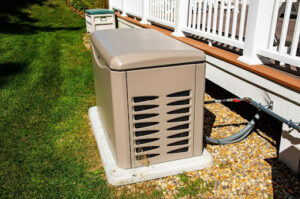
What to Do After Your House Is Struck by Lightning
Lightning strikes can be a terrifying experience for any homeowner. The powerful boom and bright flash are unmistakable, leaving you to wonder about the safety
If you are confused by the term HVAC and how it differs from the more familiar “AC,” you’re not alone. While both are acronyms for air conditioning, the first encompasses a bit more of the technical landscape. HVAC is an industry term for heating, ventilation and air conditioning. This refers to the entire heating and cooling system of a home and includes ventilation (for your kitchen, bathroom, https://www.universalhomeexperts.com/hvac/air-conditioner-repair/and dryer). While AC is simply an acronym for air conditioning, the specific cooling component in your home. An AC can refer to a single window unit or the cooling half of your HVAC. However, the term “air conditioning” can also be used to describe any system that conditions the air, whether cold or hot.
Basic Residential HVAC/AC Options:
Central Air –
The most common type of HVAC system is the central air unit. This technology utilizes an outdoor compressor unit and an indoor coil to heat and cool large buildings and homes. Using a series of air ducts that are piped throughout the building, the heat and humidity inside is extracted when the compressor pumps refrigerant through the system. The hot air is moved to the coil where it is pumped outside, while the cool air continues to be distributed throughout the home. The same HVAC system can be used to generate warm air in the winter.
Window AC Units –
These compact designs are used primarily to cool single rooms or small apartments. All of the components of a central air unit are compressed into one system. The compressor, condenser, expansion valve, evaporator and cooling coil are all confined to one single unit. This design (with slight modifications) was the first AC to be mass marketed to the public in 1931. However, they proved to be too expensive ($10,000 – $50,000) for most consumers at the time. It wasn’t until the 50’s that a cheaper and more efficient model was made available and embraced by the general public.
Split and Ductless Systems –
These systems are popular in homes and businesses where ductwork would be difficult to install. Similar to central air units, there are two parts to a split or ductless system; one outside and one inside. The indoor component houses the evaporator coil and the cooling fan while the outside unit contains the compressor, condenser and expansion valve. The main difference between these systems and their AC counterparts is the size; they are more compact than even window units and take up much less space outside than a central air condenser. Split and ductless systems are also more versatile than window units, offering more options for cooling (you can add several cooling units, called zones, throughout the home), are quieter to operate and generally more efficient.
Ventilation –
The “V” in HVAC is one of the most important components in air conditioning. Ventilating is essential for a healthy home – and a healthy household. Ventilation is simply the supply and removal of inside air through a variety of mechanical processes. This is accommodated by the duct system and your HVAC and fan units. Good ventilation is important as it ensures healthy indoor air quality, which can go stagnant and even become toxic without proper circulation.
If you ever have problems with any component of your HVAC system, Universal Home Experts is always here to help. We can assist with AC and furnace repair, duct cleaning, indoor air quality solutions and much more. Call us at (713) 364-0226 and we’ll schedule an appointment today!

Lightning strikes can be a terrifying experience for any homeowner. The powerful boom and bright flash are unmistakable, leaving you to wonder about the safety

It’s easy to overlook the silent threats that lurk within the walls of your own home — especially when it comes to the electrical system.

In today’s world, where unpredictability seems to be the only constant, ensuring the reliability and safety of our homes has become paramount. Whether it’s due